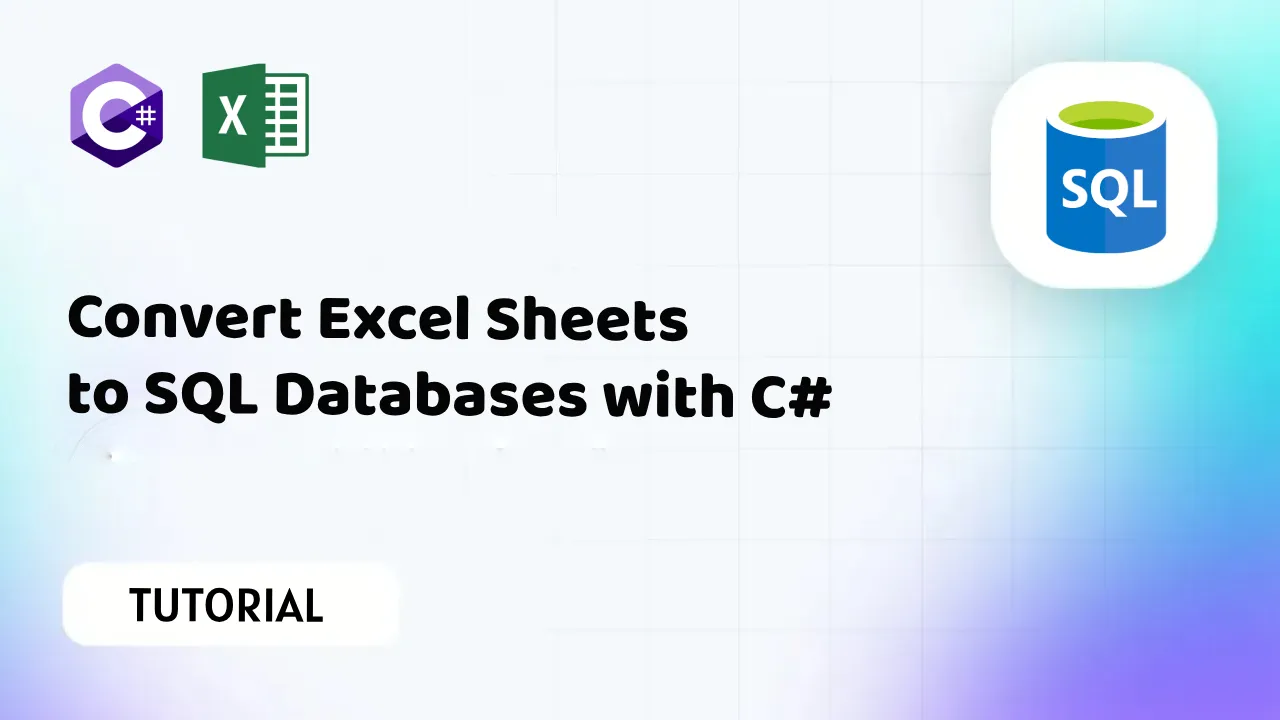5 Ways to Load Excel Sheets into SQL with SQLLoader

When dealing with extensive datasets, loading data from Excel sheets into an SQL database can be a common yet challenging task. This necessity often arises in data-driven environments where quick and efficient data analysis, reporting, and integration are paramount. This blog post explores five different methods to achieve this using SQL*Loader, a powerful utility by Oracle, designed for bulk loading data into Oracle Database. Let's dive into each method, understanding their setup, strengths, and potential drawbacks.
Method 1: Direct Load from CSV

- Preparation: Convert the Excel file to CSV format.
- SQL*Loader Setup:
load data infile ‘your_file.csv’ into table your_table fields terminated by ‘,’ optionally enclosed by ‘“’ (column1, column2, column3) - Command Execution: Run SQL*Loader from the command line with
sqlldr USERID=user/password CONTROL=control_file.ctl.
📝 Note: Ensure your Excel data does not contain any leading or trailing spaces as they might not get trimmed, causing errors in loading.
Method 2: Using an ODBC Driver

- Setup: Configure an ODBC connection to Excel, allowing SQL*Loader to access Excel files directly.
- Control File:
load data infile ‘ODBC:DSN=Excel_Connection’ into table your_table (column1 POSITION(1:10), column2 POSITION(11:20), column3 POSITION(21:30))
🔧 Note: This method requires specific ODBC drivers installed and correctly configured.
Method 3: Through an External Table

- Create External Table:
CREATE TABLE your_external_table (column1 VARCHAR2(20), column2 VARCHAR2(20), column3 VARCHAR2(20)) ORGANIZATION EXTERNAL (TYPE ORACLE_LOADER DEFAULT DIRECTORY data_dir ACCESS PARAMETERS (RECORDS DELIMITED BY NEWLINE FIELDS TERMINATED BY ‘,’ MISSING FIELD VALUES ARE NULL) LOCATION (‘your_excel_file.csv’)) REJECT LIMIT UNLIMITED; - Data Loading: Use the external table to load data into the target table with an INSERT statement.
Method 4: Leveraging PL/SQL and UTIL_FILE

- Steps:
- Use UTIL_FILE to read the Excel file or its CSV representation.
- Parse the data with PL/SQL.
- Insert data directly into the database.
- Code Example:
DECLARE v_file UTL_FILE.FILE_TYPE; v_line VARCHAR2(32767); v_col1 VARCHAR2(20); v_col2 VARCHAR2(20); v_col3 VARCHAR2(20); BEGIN v_file := UTL_FILE.FOPEN(‘DATA_DIR’, ‘your_excel_file.csv’, ‘R’); LOOP UTL_FILE.GET_LINE(v_file, v_line); – Parse line and insert data … END LOOP; UTL_FILE.FCLOSE(v_file); EXCEPTION … error handling … END;
📝 Note: This approach provides more control but requires programming effort in PL/SQL.
Method 5: Using DBMS_DATAPUMP

- Setup:
BEGIN DBMS_DATAPUMP.METADATA_FILTER(handle => NULL, name => ‘TABLE_EXPRESSION’, value => ‘IN (“SOME_TABLE”)’); DBMS_DATAPUMP.DATA_FILTER(handle => NULL, name => ‘EXCLUDE_PATH’, value => ‘TABLE_DATA’); DBMS_DATAPUMP.ADD_FILE(handle => NULL, filename => ‘your_excel_file.dmp’, directory => ‘DATA_PUMP_DIR’); DBMS_DATAPUMP.START_JOB(handle => NULL); END;
This method exports data from Excel into a dump file, which can then be imported into the SQL database.
To summarize, each method offers unique advantages:
- Direct CSV Load: Simplest for straightforward data structures.
- ODBC Driver: Allows direct connection to Excel, reducing file handling.
- External Tables: Facilitates data transformation and validation before loading.
- PL/SQL with UTIL_FILE: Offers precise control over data manipulation and loading.
- DBMS_DATAPUMP: Leverages Oracle's data movement utilities for more complex data integration scenarios.
In closing, selecting the best method depends on your specific requirements like data complexity, data transformation needs, and the level of automation desired. Whether it’s the simplicity of a direct load or the control provided by PL/SQL, SQL*Loader offers versatile solutions to incorporate Excel data into your SQL databases efficiently.
Can SQL*Loader directly load data from .xlsx files?

+
SQL*Loader itself cannot directly load from .xlsx files. These files must first be converted to CSV format or accessed via an ODBC driver set up to read Excel files.
What if my Excel file has different formatting options?

+
You would need to ensure that your data is formatted consistently before loading. Consider using external tools or scripts to clean and prepare the data for SQL*Loader.
How can I handle large Excel files with SQL*Loader?

+
For large files, consider using methods like External Tables or PL/SQL with UTIL_FILE which can handle chunking or streaming of data, reducing the load on system memory and improving performance.
Do all methods require converting Excel files to CSV?

+
Not all methods require CSV conversion; for instance, the ODBC method allows direct reading from Excel files, although some form of data preparation is usually still necessary for consistency.
What are the performance considerations for these methods?

+
Performance can vary; direct CSV load is fast for simple data. External tables offer good performance with data transformation capabilities. PL/SQL methods provide control but can be slower for large data sets due to row-by-row processing. DBMS_DATAPUMP can be very efficient for transferring large datasets between different systems.



